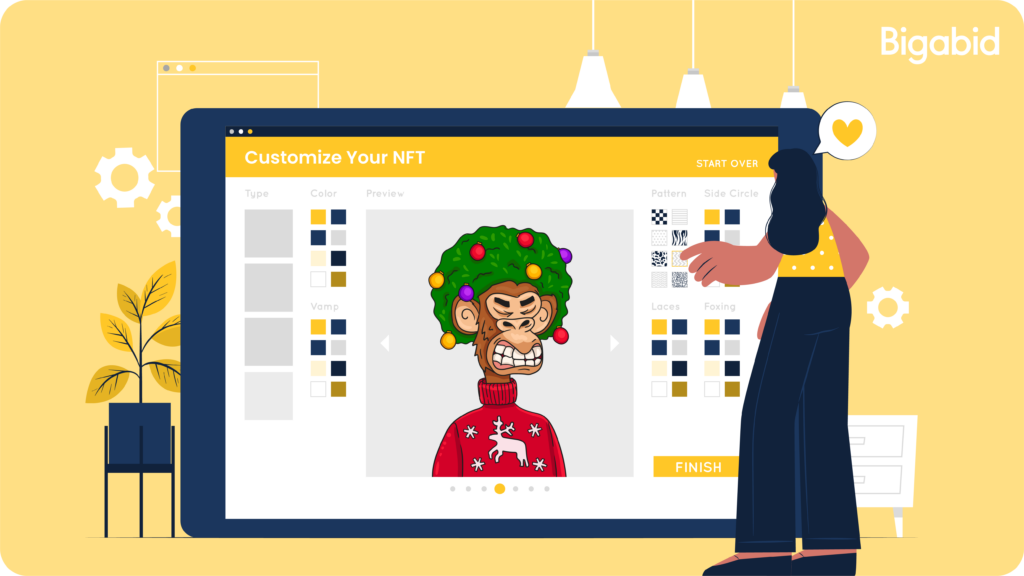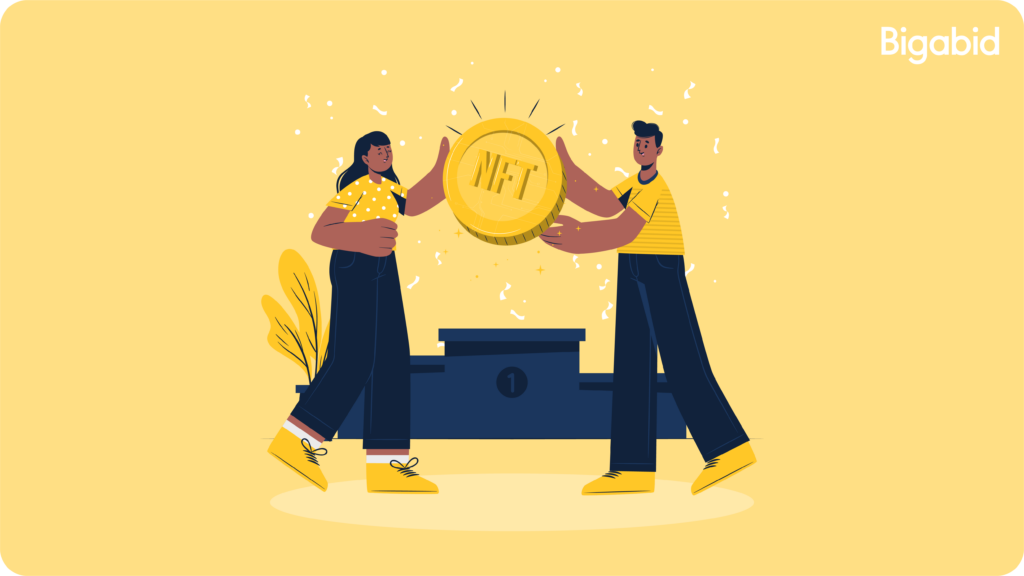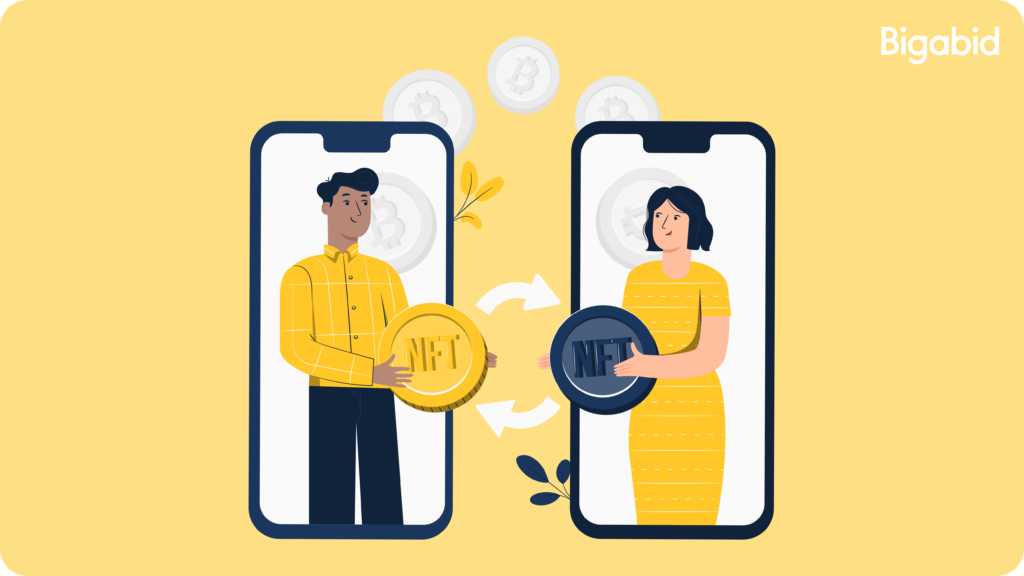
Game developers nowadays are discovering innovative ways to monetize their titles, acquire users, and improve development efficiency using a model called Play and Own (P&O).
P&O allows users to directly own in-game assets as NFTs and trade or sell them through a secondary marketplace. This enables developers to earn royalties from marketplace transactions and leverage wallet technology for enhanced user acquisition. But what value does true user ownership bring to my users?
Firstly, it’s important to emphasize that games must prioritize fun. P&O adds an extra layer of enjoyment by offering users increased community engagement, creative freedom, in-app purchases as valuable assets, and stronger connection to their favorite games through true ownership alongside the core gameplay.

The play-and-own (P&O) model does not rely on cryptocurrencies, allowing game developers to balance the game economy using well-tested methods and mechanics. Instead, players in the game have digital ownership of rare in-game items or assets. This ownership model enables players to profit from selling their items, including higher-level characters or rare cosmetic skins. Additionally, outside creators can contribute new cosmetic items to the game and earn royalties from their creations. Blockchain technology facilitates secure commerce and cross-border transactions, even in regions where payment is challenging. Unlike other play-to-earn (P2E) games that require purchasing NFTs, P&O games are free-to-play, and developers generate revenue through other means such as:
Selling premium items, including assets (NFTs) and consumables (e.g. time-saving).
Selling game season passes.
Receiving royalty or commission from reselling.
The revenue sources of these P&O games are almost identical to F2P games, except for royalty and commission. The distinction lies in the opportunity to own in-game assets. Game developers can unlock value for players and generate additional revenue through royalty and commission fees.

Value 1: Trust and connection are the foundational values in the realm of collectibles and gaming. Whether it’s in-game collectibles or real-world counterparts like figurines and special edition consoles, the bond between the two has always been strong. However, with the advent of blockchain technology, a new era of user ownership arises. Unlike before, where users only had nominal ownership of in-game assets, now they can truly possess these assets as non-fungible tokens (NFTs), giving them the freedom to do as they please. This revolutionary shift adds value to users’ experience by fostering a greater sense of ownership and a more profound emotional connection with their assets.
Furthermore, users can leverage their collectibles, be it avatars or weapons, not only within the game but also across various platforms, extending into the real world. This is made possible by accessing these assets through their wallets, a distinct platform dedicated to asset storage. Users have the freedom to trade, sell or showcase their assets independently from the game they originated from, all within their wallets.
Value 2: Shifting IAPs from expenses to assets via the secondary market. P&O offers unique value to users through the secondary market. It enhances user in-app purchases by introducing true user ownership, transforming IAPs into asset acquisitions rather than mere expenses.
Traditionally, users are discouraged from making in-app purchases due to the concept of sunk-cost, where purchases are seen as expenses tied to a hobby without any future value. This relationship is redefined by P&O. In P&O, users acquire in-game assets in the form of NFTs, which can be sold to other users through the secondary market for monetary gain.
Furthermore, users have the ability to trade assets and share their in-game rewards with other players. This feature allows users to gift their hard-earned assets to friends and family or trade them for different non-fungible tokens (NFTs) they desire. The secondary market in the game provides users with tangible value for their investments.
Value 3: User-generated content offers users the freedom to create, personalize, and innovate. This form of content has a long-standing existence. Throughout gaming history, from cheat codes to mods, users have actively sought ways to manipulate game worlds to suit their preferences.
When incorporating real monetary value and granting users the ability to manipulate and interact with their creations as desired, the potential for user-generated content in P&O games becomes boundless.
By leveraging the inherent tools provided by P&O, users can personalize their gaming experiences through the creation of unique avatars, skins, equipment, and custom animations. The user-generated content possible through true user ownership is both valuable in the creativity it offers as well as the ROI that is available. Users are now not only free to create what they want, but will also find a market that wants to reward them for their creations.
Value #4: An engaged community with genuine buy-in is a significant aspect that attracts many users to gaming. Community provides users with a sense of belonging and acknowledges their efforts within a game. It serves as a platform where like-minded members recognize a user’s accomplishments and understand the dedication put into them.
With P&O, community members can appreciate the cool, unique, and powerful nature of a player’s NFTs, granting social capital as a reward for investing in a game. This fosters a deeper bond between the user and the community. Users invest their time and passion into their in-game characters, and a community that acknowledges and rewards this dedication acts as a strong motivator. Communities offer users the opportunity to showcase their assets and achievements, creating a rewarding environment. This positively impacts the entire gaming ecosystem by enhancing the enjoyment of games through real-world rewards linked to in-game success.
One counterargument to this model is that the revenue generated from commission and royalties may be insufficient and could negatively impact sales of premium items. Nonetheless, looking at the trading volumes across different NFT marketplaces, it becomes evident that revenue derived from marketplace commissions and royalties can be significant for games that involve ownership. Moreover, concerns regarding cannibalization of premium item sales seem to be largely speculative, considering the following reasons:
Publishers have the ability to determine the timing and nature of in-game assets that can be owned (minted as NFTs). They can maintain direct sales of consumable items (e.g., time-saving tools, resources for upgrades) without the need for them to be minted as NFTs since these items are frequently produced and consumed.
Publishers can establish an exclusive period for selling new in-game assets before allowing them to be minted as NFTs. This method is similar to the release strategy for movies, where theaters have an exclusive showing period before the title is available for purchase, rental, or streaming. By adopting this approach, publishers can retain control over the primary market, capturing the majority of potential revenue upfront, and also benefit from ongoing revenue streams through commissions and royalties derived from the secondary market.
Through ownership, publishers gain additional tools to enhance engagement, such as NFT rewards offered in contests, events, and tournaments. By distributing rewards during these activities, more players are likely to participate, resulting in increased playtime and a greater willingness to purchase consumable items within the game. In essence, publishers can drive player activity and transaction volume through captivating events.

While users are primarily motivated by enjoyment and developers by profitability, both parties benefit from the value created in P&O games. Users appreciate the ability to truly own virtual assets, enabling creativity, fostering community, and ensuring safety. Developers benefit from users’ increased motivation to spend and participate in the game ecosystem through the advantages of ownership and subsequent tradability. This also encourages users to invite more players, creating a positive feedback loop where users spend and engage more as they find value in the game. Consequently, the game ecosystem becomes more valuable, attracting more users to join in the fun.
P&O games offer immense value and innovative ways for both groups to enjoy and create games. As P&O enters the mobile space it will change how users interact with apps. Bigabid is devoted to keeping up with trends like this to better integrate user acquisition and retargeting. Please get in touch!